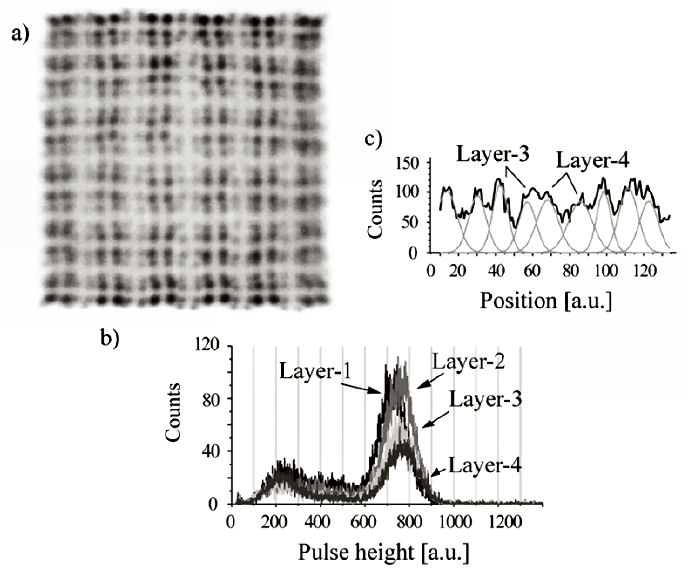| TITLE |
|---|
| AUTHORS |
| SOURCE |
(DOI: 10.1109/TNS.2005.862963)
|
| ABSTRACT |
|
We found that Bi4Ge3O12 (BGO) scintillator can be elements of a four-layer depth of interaction (DOI) detector and it was proved with an 12 x 12 x 4 array of BGO crystals in dimensions of 2.9 mm x 2.9 mm x 7.5 mm coupled to a 256-channel flat panel position sensitive photomultiplier tube. Appropriate reflector insertion in the array makes all crystal identification possible on one position histogram. Despite the large refractivity and small light output of BGO, the four-layer BGO detector showed no significant variation in the full energy peaks among all crystal elements. When no optical grease was used in the construction of the BGO DOI-block and irradiated with gamma-rays from 137Cs, a top layer crystal has 80% of light output relative to the bottom layer. The obtained two-dimensional position histogram by the irradiation was clear enough to allow identification of the crystals of interaction. Profiles of the histogram show peak-to-valley ratio of 1.9:1 for the top layer crystals and larger ratio for other layer crystals in the experiment.
 Fig. 8. (a) 2D position histogram, (b) pulse height distributions, and (c) profiles with Gaussian fittings when silicone grease was used for coupling of each layer in the four-layer DOI-block. |
| KEYWORDS |
| BGO, depth of interaction (DOI), positron emission tomography (PET), PS-PMT, scintillator |
